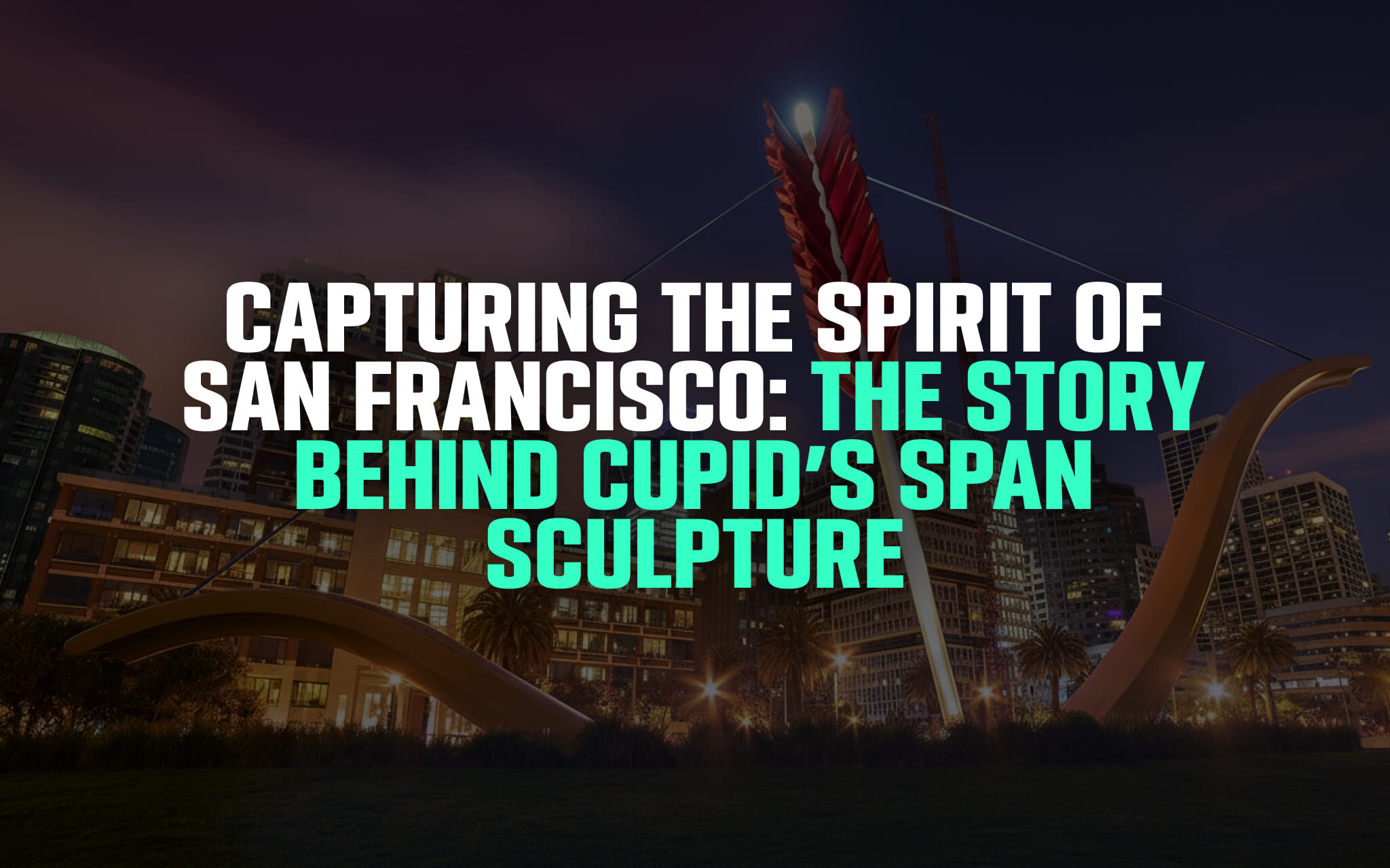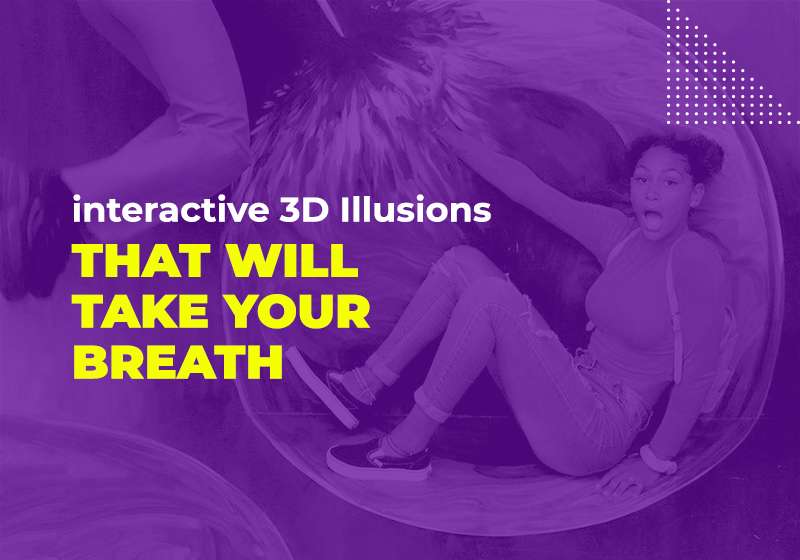
Rising boldly along the Embarcadero, Cupid’s Span captures the imagination of anyone who strolls San Francisco’s vibrant waterfront. This monumental bow and arrow sculpture, designed by Claes Oldenburg and Coosje van Bruggen, commands attention with its sweeping curves and colossal form. Measuring approximately 60 feet high and 140 feet long, it was installed in 2002 as a tribute to the city’s playful and romantic spirit.
The sculpture’s construction blends artistic creativity with engineering precision. Its steel bow and fiberglass arrow contrast sharply against the shimmering blue of the Bay, forming a visual dialogue between urban innovation and natural beauty. Oldenburg and van Bruggen, famous for transforming everyday objects into monumental public art, envisioned this piece as both a gift and a conversation starter — a reminder that love, like art, can be larger than life.
What makes Cupid’s Span remarkable is how it embodies both simplicity and depth. The bright red arrow pierces the park’s green expanse, symbolizing affection striking the heart of the city. Its form complements the soaring geometry of the Bay Bridge nearby, while its materials ensure resilience against the waterfront’s salty breeze. The sculpture continues to serve as one of San Francisco’s most recognizable landmarks, bridging art, emotion, and place.
Setting and Context: Where It Lives on the Waterfront
Positioned in Rincon Park, at the junction of Folsom Street and the Embarcadero, Cupid’s Span occupies one of the most picturesque stretches of San Francisco’s shoreline. The site provides sweeping views of the Bay Bridge, Treasure Island, and the sparkling waters that define the city’s eastern edge. Visitors often pause here during walks from the Ferry Building to enjoy both the sculpture and the surrounding parkland.
Rincon Park was designed as an open, accessible space for residents and travelers alike. The gentle slope of its lawn draws the eye naturally toward the sculpture, while the waterfront walkway invites endless opportunities for photography and quiet reflection. Whether approached on foot, by bicycle, or via the city’s historic streetcars, the location makes Cupid’s Span a natural stop for anyone exploring San Francisco’s public art scene.
Beyond its location, the sculpture also reflects the collaborative effort between artists, engineers, and civic planners who sought to enhance the city’s evolving waterfront identity. When the Embarcadero Freeway was removed after the 1989 earthquake, spaces like Rincon Park emerged as new urban canvases. Cupid’s Span became one of the first major artworks to define this reborn area, anchoring it visually and emotionally.
Why It’s Great: Experience, Photogenic Appeal, and Symbolism
Few sculptures capture the essence of San Francisco quite like Cupid’s Span. Its playful imagery of a giant arrow planted in the earth sparks instant curiosity, while its sheer size makes it impossible to overlook. Visitors often describe the experience as simultaneously intimate and grand — the artwork feels both personal and public, like a shared secret in plain sight.
The sculpture’s visual allure lies in its balance of motion and stillness. The bow arcs gracefully, as if drawn by invisible hands, while the arrow appears mid-flight, frozen in time. Against the backdrop of the Bay Bridge’s silver lattice, the contrast between art and infrastructure becomes poetry. Photographers treasure this site for sunrise and sunset shots that bathe the sculpture in glowing light.
Symbolically, Cupid’s Span celebrates affection and connection, nodding to San Francisco’s reputation as a city of openness and creativity. Its creators described it as representing “the home port of Eros,” a metaphor for love landing in the city. The sculpture’s whimsical premise — that an arrow of love might fall straight into the heart of San Francisco — continues to enchant everyone who visits.
Visitor Tips & Practical Details
One of the great joys of Cupid’s Span is its accessibility. Because the sculpture sits in an open park, visitors can view it at any time of day, without barriers or fees. Early morning offers tranquil light and fewer crowds, while late afternoon casts dramatic shadows across the grass. Evening brings a romantic ambiance as the Bay Bridge lights shimmer behind it.
Travelers can easily incorporate a stop here into a walking route along the Embarcadero. The area connects smoothly to nearby highlights such as the Ferry Building, the Exploratorium, and waterfront restaurants. Those exploring by bicycle will find ample paths, while public transit conveniently stops just steps away. The park’s gentle slopes make it suitable for relaxed picnics or quiet reflection by the water.
From an engineering perspective, the sculpture also fascinates. Its steel framework was fabricated with remarkable precision to withstand wind, moisture, and seismic activity. The fiberglass arrow shaft gleams vividly even after years of exposure, a testament to both its design and craftsmanship. Cupid’s Span continues to serve as an enduring piece of San Francisco’s cultural landscape, admired by locals and visitors alike.
A Surprising Companion Attraction: Museum of 3D Illusions in San Francisco
For those who delight in visual play and creativity, another San Francisco attraction offers a dynamic complement to Cupid’s Span — the Museum of 3D Illusions. Much like the bow and arrow sculpture transforms perception on the waterfront, this museum immerses guests in scenes that bend reality through art. Inside, visitors might find themselves sinking into a radiant tropical beach, drifting among a cloud of floating balloons, or scaling a towering mountain peak painted with breathtaking depth.
Each illusion is hand-painted by skilled artists to produce a full-body, interactive experience. Visitors step into the artwork, becoming part of each scene rather than simply viewing it. This sense of participation transforms visual art into something kinetic and personal — an approach that mirrors the public accessibility of Cupid’s Span itself. Both invite the viewer to engage, not just observe.
The museum’s second experience, Smash It!, offers an entirely different but equally expressive outlet. Here, guests can write their frustrations or reflections on ceramic plates and then break them — a creative release that contrasts beautifully with the serene elegance of the waterfront sculpture. Together, these attractions celebrate San Francisco’s devotion to imagination, artistry, and the joy of seeing the world from unexpected angles.
FAQ
What makes the Cupid’s Span sculpture special?
The Cupid’s Span sculpture in San Francisco was created by artists Claes Oldenburg and Coosje van Bruggen. Its striking design and scale make it a popular photo spot, symbolizing love and creativity against the city’s iconic Bay views and reflecting San Francisco’s artistic spirit.
Is the Museum of 3D Illusions near Cupid’s Span in San Francisco?
Yes, visitors to Cupid’s Span in San Francisco can easily continue their art-filled day at the Museum of 3D Illusions. Both attractions highlight the city’s fascination with visual creativity — one through a massive outdoor sculpture, the other through immersive, photo-ready illusions.


